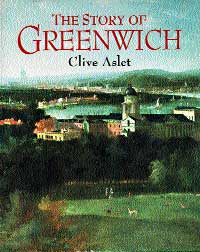Book Review: The Story of Greenwich
Greenwich used to be a venue for the organised mayhem which was the Greenwich Fair.


The Story of Greenwich, by Clive Aslet
Taking place every Whitsun and Easter, the organised mayhem of Greenwich Fair was one of the events of the London year. Even the French philosopher Voltaire visited it, entranced by what he took to be 'people of fashion' - who turned out to be only the servant girls, apprentices and other townspeople of Greenwich dressed in their finery.
That was in 1726. Then there was a racetrack, for the use of both equines and humans, but the scale of the fair was still manageable and the atmosphere generally sedate. Respectable people went to meet each other, dine in specially erected booths, listen to music and dance quadrilles. But in the second half of the century the crowds coming to the fair were so great that they could not easily get through the entrances into the park. The tone degenerated. An account in The Gazetteer describes how, in May 1776, the road from London was lined with every sort of conveyance, containing pickpockets and disreputable women. Once the Greenwich Railway had opened in the next century, as many as 200,000 people poured into the fair.
The chief amusement, mentioned time and again, was scratching. The trick was to buy a little serated wheel, made of wood, at the end of a wooden stick. You then came up behind someone and ran it over his or her back. The noise was supposed to make the victim believe that his clothes had been torn. Scratchers were such a feature of the fair that one can hardly imagine that there were many people innocent enough to be caught out. Still, it was all part of the general hilarity. A more sedate pleasure was to look through the telescopes set up by Greenwich pensioners on the top of Observatory Hill, offering views of the other bank of the river for a halfpenny. The principal feature of interest, in the previous century, was the gibbet on the Isle of Dogs, where the bodies of pirates swung in their chains. Naturally, great quantities of rum, brandy and gin were consumed and the public houses were thronged, fuelling the sort of misbehaviour that culminated in a riot of drunken soldiery in 1850.
It was all rather too uproarious for the more established citizens of Greenwich. They began their campaign to close the fair in 1825, but it was not until 1857 that the forces of Victorian propriety proved too much and the fair was shut down. There was now less need for a great popular jamboree to take place so close to London, since the railways made it possible for holiday crowds to reach seaside towns like Margate and Brighton.
Sign up for the Country Life Newsletter
Exquisite houses, the beauty of Nature, and how to get the most from your life, straight to your inbox.
Country Life is unlike any other magazine: the only glossy weekly on the newsstand and the only magazine that has been guest-edited by HRH The King not once, but twice. It is a celebration of modern rural life and all its diverse joys and pleasures — that was first published in Queen Victoria's Diamond Jubilee year. Our eclectic mixture of witty and informative content — from the most up-to-date property news and commentary and a coveted glimpse inside some of the UK's best houses and gardens, to gardening, the arts and interior design, written by experts in their field — still cannot be found in print or online, anywhere else.
-
 Burberry, Jess Wheeler and The Courtauld: Everything you need to know about London Craft Week 2025
Burberry, Jess Wheeler and The Courtauld: Everything you need to know about London Craft Week 2025With more than 400 exhibits and events dotted around the capital, and everything from dollshouse's to tutu making, there is something for everyone at the festival, which runs from May 12-18.
By Lotte Brundle
-
 Everything you need to know about private jet travel and 10 rules to fly by
Everything you need to know about private jet travel and 10 rules to fly byDespite the monetary and environmental cost, the UK can now claim to be the private jet capital of Europe.
By Simon Mills